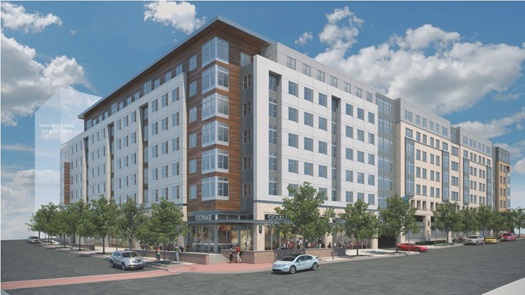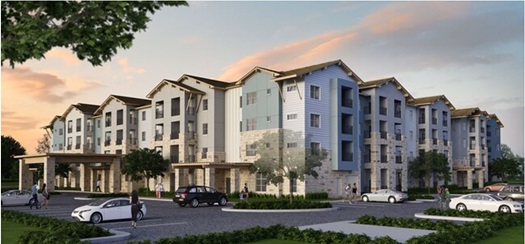Michelle Foster
September 30, 2020
What’s in a Name? Defining “Residential” in NGBS Terms
When the ICC-700 National Green Building Standard (NGBS) was approved by the American National Standards Institute (ANSI) in 2009, it was notable because it was the first national green building rating system specifically designed for residentially-used buildings. Previous to the NGBS, national green building programs such as LEED and Green Globes were designed to address the specifics of commercial buildings (e.g., offices, schools, healthcare buildings). As anyone in the construction industry knows, there are a LOT of differences between residential and commercial construction, from material selection, to scheduling, to permitting, to marketing, and the list goes on and on. Consequently, only a few multifamily buildings in the pre-NGBS days tried to adapt to the compliance requirements of the early green certification options. As a result, green building certifications lagged for all types of residential construction – both single-family homes and multifamily buildings.
NGBS Green, the building certification program based on the NGBS, changed all that. Within a year after the NGBS was released, NGBS Green certified its first 10-story multifamily building in Manhattan. Ten years later, NGBS Green is the preferred green building certification for homes and multifamily buildings.
Over the past few years, NGBS Green program staff recognized that the NGBS was not flexible enough to include all the building types that people call home. As part of the ICC suite of I-codes, the NGBS relied on traditional building code definitions and building type categories. Consequently, “Group R” occupancies from the International Building Code (IBC) were within the NGBS scope, but other buildings were not. Although the building type categories are rational for health, safety, and other traditional building code reasons, retaining these categories made less sense for a standard designed to improve the environmental performance of the places where we live. While green building rating systems are important to mitigate the impacts of the building on the environment, they are arguably more important because they also have impacts on the health and well-being of the occupants. Ultimately, it really did not make sense for the NGBS not to extend to those places where we live as students, seniors, or at other stages of our lives.
Students in dorms, fraternities, and sororities should be able to live in NGBS Green Certified buildings. Seniors and other adults who live in assisted living facilities should also be able to enjoy the benefits of an NGBS Green Certified building. Likewise, while our stays in hotels and motels may be transitional, we essentially “live” in these buildings for the duration of our visit.
The 2008, 2012, and 2015 versions of the NGBS all had two specific restrictions that made it impossible for these types of buildings to earn NGBS Green certification. First, the NGBS scope in those versions stated that the NGBS applied to the design and construction of the residential portion of any building not classified as being for institutional use. Second, the definition for “dwelling unit” in those versions is “a single unit providing complete, independent living facilities for one or more persons including permanent provisions for living, sleeping, eating, cooking, and sanitation.”
Over the past few years, developers of non-traditional housing types were disappointed that they could not use NGBS Green for their building certification. For example, even if an assisted living facility was not deemed institutional by the local jurisdiction, if the building included a small number of memory care units where cooking is restricted for the safety of the residents, then the building was deemed out-of-scope for the NGBS.
The 2020 Consensus Committee sought to remedy this issue by revising the NGBS’s definition of residential. First, the 2020 NGBS scope was expanded to include all Group R occupancies as defined by the IBC, as well as all buildings within the scope of the International Residential Code (IRC). The NGBS now specifically includes assisted living facilities, residential health and board care facilities, and group homes classified as I-1 occupancy as defined by the IBC to be considered residential. Second, the Consensus Committee added a new definition for “sleeping unit,” defined as “a room or space in which people sleep, which can also include permanent provisions for living, eating, and either sanitation or kitchen facilities, but not both.” Now the NGBS is inclusive of all buildings within which we live during the various stages and activities of our lives.
In addition to this important update regarding the definition of residential as it relates to NGBS Green certification, the scope of the 2020 NGBS also expanded to provide for the certification of non-residential space within multifamily buildings. With the 2020 NGBS, now everyone can find a better place to call home.
Interested in getting your project NGBS Green Certified? Have questions about all the new options available in the 2020 NGBS? Want us to schedule a training session on NGBS Green for your design team? Just get in touch – we’re happy to help.

Towson Row Student Housing, Towson, MD
Registered, NGBS Green Certification In-process

Arbor View 62+ Community, Austin, TX, In process
Back to Top